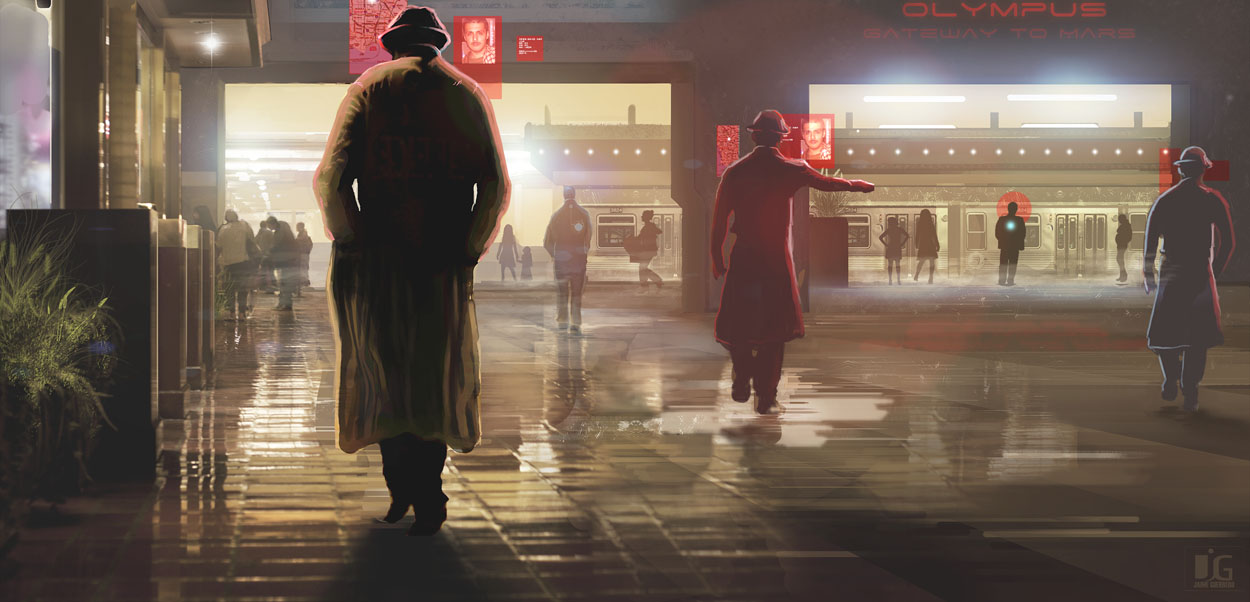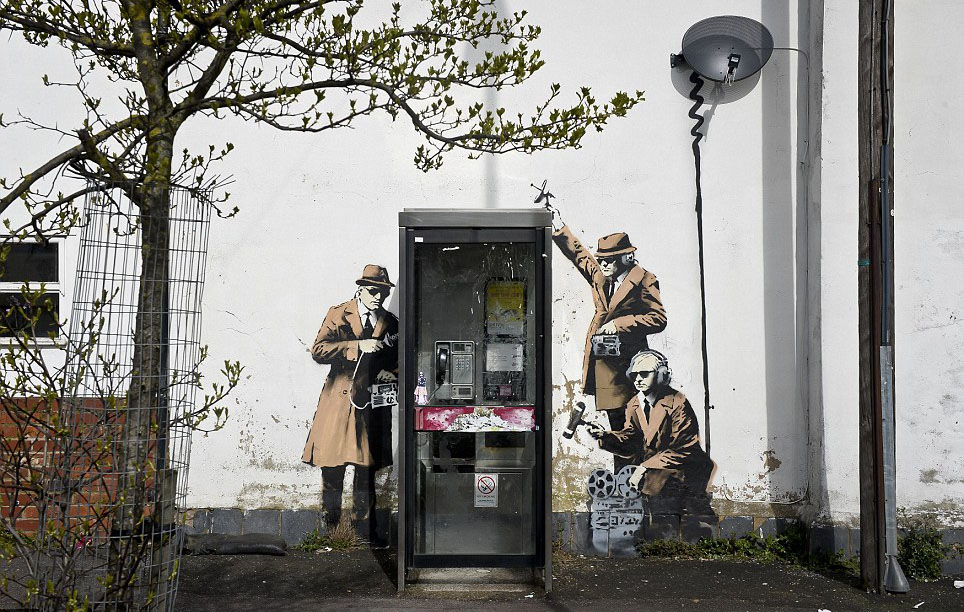Due to their ubiquity, and the multiple types of information conveyed through them, I personally don’t think there’s a “one true way” technique for handling passive perception tests. Partly because everything is a trade-off. Partly because the “one true way” is what allows the players to reliably reverse engineer from the information they have to the problematic metagame knowledge we’re trying to avoid. What I have instead is a cluster of techniques that I’ve found work well when you use them collectively – but not necessarily simultaneously – over the long-term. The techniques sort of weave together to form a tapestry that’s greater than the sum of its parts.
EXTRANEOUS TESTS: First, obfuscate the meaningful perception tests by calling for perception tests regardless of whether or not there’s anything interesting to be spotted.
Although these tests are, in some sense, “meaningless,” that doesn’t mean that they can’t be used for effect. The most obvious such effect, of course, is paranoia: “But I rolled a 28! What do you mean I don’t see anything?!” So call for these checks when things get a little spooky and it feels as if the PCs should be on edge. You’re performing a kind of judo here, turning the metagame knowledge on its head and using it to good effect.
Eventually, of course, players will figure out that you’re frequently “crying wolf” with these checks. At that point you can go for second order effects, using the checks to create false complacency: “I rolled a 28 and got nothing? Eh. GM must have been bluffing us.” And then the ninjas stab them.
If you pull that off a couple of times, the paranoia will start rolling back in. As a basic technique, you can get pretty far just riding this oscillation back and forth.
What Not to Do: I’ve seen some GMs who attempt to simply integrate passive perception tests into a regular routine. For example, they might have the group roll a perception test every time they enter a new room in the dungeon. My experience is that, compared to integrating extraneous checks for effect, this doesn’t work very well: Perception tests do chew up time and they do pull people out of the game world to some extent so that they can fidget with their dice. Furthermore, when they’re made routine, they’re often inserted habitually at the point where the PCs are encountering something new… which is the exact point where you want to maximize player engagement, not disengage for a mechanical interaction. (This is the same reason that I roll initiative checks at the end of combat.) If you want to pursue a “perception as regular routine” approach, I recommend embracing a very liberal let it ride technique to minimize the frequency of these checks. (Although, unfortunately, this will begin to reintroduce metagame knowledge issues, with the group getting an uncanny sense of how aware they’re going to be for a particular delve or run.)
REFOCUSING THE TABLE: As I mentioned in The Art of Rulings, extraneous perception tests are also the single most effective way to refocus the table’s attention on the game world when metagame distractions and chitchat have derailed the players. (You’d think that just saying, “Okay, let’s focus,” would be equally effective, but I’ve found that it isn’t. If you ask people to focus, they start up a sort of general “focusing process” that often includes apologizing, further dithering, and otherwise not focusing. Ask them to do something specific and concrete, on the other hand, and they become immediately focused.)
Of course, sometimes you can refocus the table by calling for a perception test to notice the incoming bad guys heading their way. So sometimes the meaningless “let’s refocus, guys!” test will, in fact, turn out to be quite meaningful.
INNOCUOUS INTEREST: Which brings us to the next thread of the tapestry, in which the “meaningless” extraneous perception tests are actually being triggered by more casual elements of the game world: There are claw marks in the ceiling, or the base of the idol has been rubbed to a bright sheen, or you think that you can detect the smell of a cooking fire from somewhere down the left hand corridor, or you take note of a particularly interesting historical detail in the painting on the wall.
Now there is no “bluff” at all. It’s just that when the PCs miss a perception test, the players have no way of knowing whether it was for an ambush or for noticing the local style of pottery.
A WORLD OF (NEAR) INFINITE INTEREST: Of course, now that we’ve convinced the players that there is no bluff, that’s exactly what we’ll do. A good check will always result in them noticing something, even if it wasn’t the primary thing that triggered the test. You rolled a 45 but you needed a 47 to notice the assassin hiding behind the arras? I’m still going to tell you about the claw marks, the idol’s sheen, the smell of cooking, and/or the historical detail in the painting on the wall.
So now, even if they appear to have succeeded on the test, the players can’t be certain that it wasn’t actually a failure in some broader sense.
Improvising these details is also just a really great way to develop the depth of the game world. But this is also a great opportunity to expand the dynamic scope of the environment: Sound and scent can be perceived without a direct line of sight, allowing you to hint at things nearby. Active elements of the area can also have affected the immediate surroundings of the NPCs (i.e., who or what has passed through here?). If you’re in a dungeon, check your key for nearby areas, look at your adversary roster, or roll on you random encounter table for inspiration.
OVERLAP OF PASSIVE & ACTIVE TESTS: Another technique is to overlap the demesne of passive and active perception tests. In other words, if your passive perception test is good enough, you’ll notice stuff that would normally require you to actively search the room.
The distinction here can be very clear in systems which use different skills for active vs. passive perception. For example, in 3rd Edition D&D I allow Spot checks to effectively function as Search checks with a -20 penalty. (So if you roll 40 on your Spot check, you’ll notice traps, secret doors, and other hidden stuff that would normally require a DC 20 Search check.)
I find this is a great way to reward players for their areas of specialization, while emphasizing how awesome their higher level characters really are. It’s also a good technique to use if you’ve called for an extraneous passive perception test and someone gets a really amazing result: Check your notes and see if there’s an active search check (or even just something that you’d assumed would require specific observation) to notice.
(If you’re using the system described in The Art of the Key, I’m basically saying “check your bullet points.” If you’re struggling to figure out how certain items could be discovered through passive perception, check Matryoshka Search Techniques.)
SPLIT GROUPS: As a minor technique, when the group is split up, you can also ask for a passive perception test from everyone. Now they don’t even know which group (if either) actually had the triggering condition! And sometimes it’ll be both! (You can use thematic crossover techniques to unify the disparate action. You can see a humorous example of this in my Ptolus campaign journal.)
THE ULTIMATE EFFECT: So sometimes you make a perception test, and you don’t notice anything because it was a “fake” check, but sometimes it was because you failed it. And sometimes you notice something, but it was actually still a failure. And sometimes you notice the same sort of thing, but it will be because you succeeded on the test.
What the GM has done is obfuscate the true meaning of the test, and then obfuscated the obfuscation with an interwoven labyrinth of techniques. (And, importantly, most of these techniques are adding additional layers of value above and beyond simply obfuscating the purpose of your perception tests.) The result won’t completely obliterate every trace of metagame knowledge contained in the call for a perception test, but it doesn’t have to: It just has to introduce enough noise that the players’ won’t be able to reliably pick out the signal.
One particularly memorable group, for example, thought that they’d identified a “fake test” that I was using “just for effect”. Nope. They’d actually just missed their NPC “ally” pick-pocketing the magical artifact they were supposed to be guarding. When they realized what had happened, that was their breaking point and they gave up on that kind of metagame thinking.
The truth is most players aren’t actually interested in the metagame knowledge. But if the information is just lying there in plain sight, they can’t help noticing it… and then obsessing over it. It becomes this whole thing. In my experience, if you hide the information just a little bit and make it unreliable even when they do look at it, you’ll quickly break the instinct. (In a sense, you’re just trying to crank the DC for their passive perception test high enough that it would require an active perception test to notice the metagame knowledge.)
WHY BOTHER?
You may have noticed that we’ve been ignoring the elephant in the room: Why bother with all this? If the GM simply rolls all the checks, that’s a perfect solution for the metagame knowledge problem. So why are we not just doing that?
First, because, as I noted before, it doesn’t always work. Any limited resource that would impact the passive perception test (whether a meta-mechanic or otherwise) or player-faced mechanics in general prevents the “GM rolls” solution from being used.
Second, because I’m faux lazy. As a general rule, I try to push as much bookkeeping off my plate as the GM and onto the players as possible, because everything I keep on my plate is, in fact, a trade-off. I’ve found that there’s always room for more stuff that I could be tracking behind the screen to enhance the game. This also, as previously mentioned, tends to increase the accuracy of the result.
Third, as an experienced GM you learn how to take advantage of the momentary pause as people roll their dice: You multitask. You call for a check and you do this other thing while people get their results and then you grab the results. Passive perception tests, unsurprisingly, tend to occur just as you’re setting up for something new, and using that momentary pause to get your notes lined up for whatever that is turns out to be incredibly useful in keeping the game flowing forward. At a certain point, not only losing that crucial moment of prep but adding to it the time necessary to resolve all those passive perception tests yourself just starts feeling kludgy as hell.
Fourth, the refocusing thing works really well. You can take that technique away from me when you pry it from my cold, dead hands.
Fifth, I’ve found that this approach tends to have positive effects in general. Players who learn to stop trying to glean metagame knowledge from perception-type resolutions often also stop engaging in that behavior in other situations, too, either because they’ve learned that it’s not worth the effort or (more often) because they never really wanted to be burdened with the metagame knowledge in the first place. You win the battle in one place and you break the wider, often subconscious, habit across the board.








 In my opinion, when in doubt, default to Type 4. I don’t always do a great job of this myself, but for all the reasons discussed above I think it’s the better way to go.
In my opinion, when in doubt, default to Type 4. I don’t always do a great job of this myself, but for all the reasons discussed above I think it’s the better way to go.









